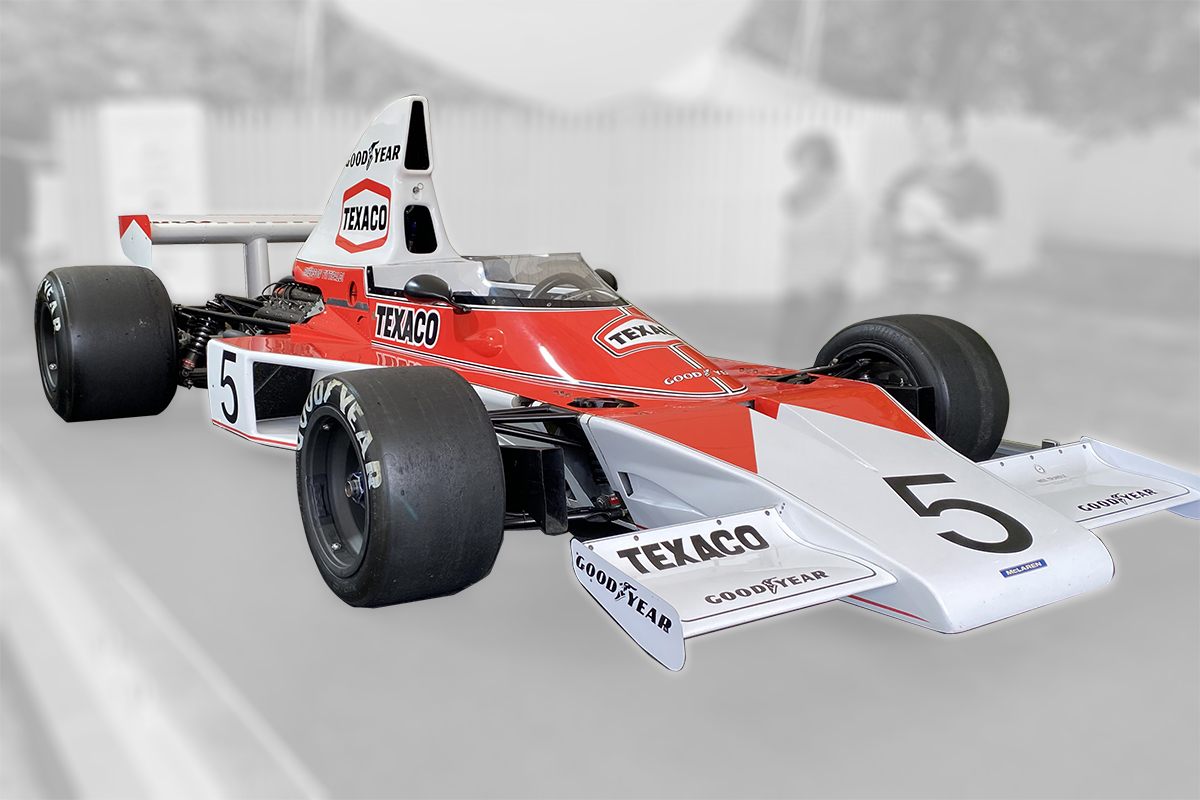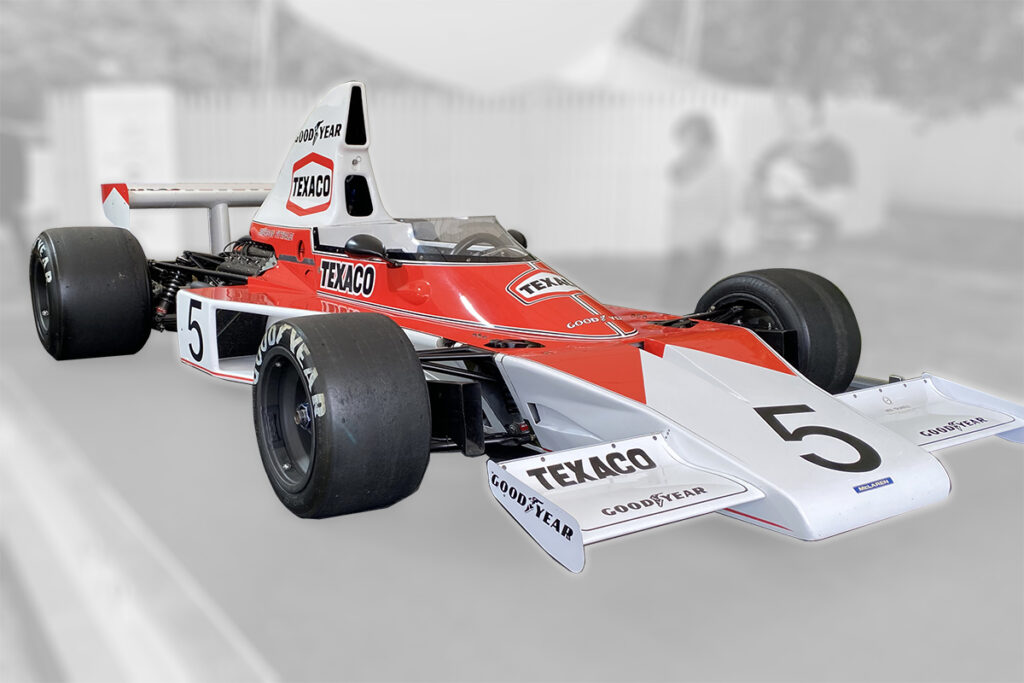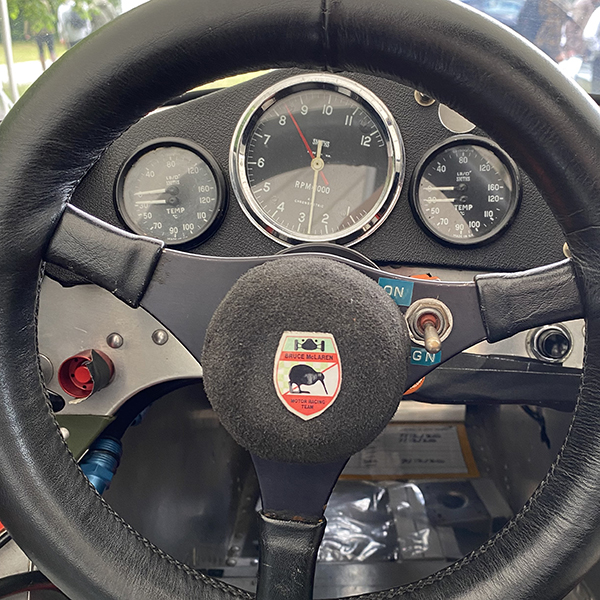
Emerson Fittipaldi, McLaren and SMITHS
In 1974, Emerson Fittipaldi won the Formula One world championship driving for McLaren in the M23 racing car
In 1974, Emerson Fittipaldi won the Formula One world championship driving for McLaren in the M23 racing car, which featured SMITHS instrumentation.

In 1974, Emerson Fittipaldi won the Formula One world championship driving for McLaren. This was the second and last championship victory for the Brazilian after success in 1972 driving for Lotus. However, the 1974 championship was McLaren’s first title, sparking an illustrious history in Formula One.
Fittipaldi had joined McLaren from Lotus in 1974 and his knowledge of the Lotus 72 Formula One car helped McLaren develop their M23. The McLaren M23 project was headed up by British racing car designer Gordon Coppuck, who based the design on the McLaren M16 Indianapolis 500 car. The M23 used a Ford Cosworth DFV (Double Four Valve) V8 engine, which was fine-tuned by Nicholson-McLaren Engines.
The 1974 Formula One championship was wide open after the retirement of defending champion Jackie Stewart at the end of the previous season. The championship went down to the final race in the United States, with Fittipaldi and Swiss driver Clay Regazzoni, driving for Ferrari, on equal points. Fittipaldi’s fourth place was enough to secure his second championship by three points.
Fittipaldi won three races in 1974; his home grand prix in Brazil as well as the races in Belgium and Canada.
The 1974 Formula One championship success was the first for McLaren, who also won the Constructors’ championship as McLaren-Ford. The team had joined Formula One in 1966 as Bruce McLaren Motor Racing Ltd, with Bruce McLaren winning the team’s first Grand Prix in 1968 at Belgium.
Fittipaldi was a brave racer with an eye for breath-taking overtaking moves. There are five races that defined Fittipaldi’s success and these are known as the Mighty 5.
At the Interlagos Grand Prix in Brazil in January Fittipaldi’s started his second Grand Prix for McLaren on pole. Despite initially dropped down to third, his driving prowess and the M23 power secured victory, lapping every other driver except Regazzoni.
In May, Fittipaldi returned to the Nivelles circuit in Belgium where he had won for Lotus in 1972. Despite being fourth on the grid, Fittipaldi had taken the lead by mid-way and managed to hold off second place Ferrari driver Nikki Lauda for victory
The Canadian Grand Prix was held in September and Fittipaldi secured a much-needed pole position. After lap 49, Fittipaldi was on the tail of Lauda. The cat and mouse battle resulted in Lauda crashing out on lap 67, leaving Fittipaldi free to secure victory.
Monaco is, arguably, the most challenging Grand Prix on the calendar. Fittipaldi had never won the race, where overtaking opportunities were very limited. Starting in ninth place in on the grid in 1975 made victory very unlikely. However, with many drivers crashing out on the damp track, and despite victory once again eluding Fittipaldi, he secured second place behind Lauda.
The Monza Italian Grand Prix in September 1975 saw the two Ferraris of Lauda and Regazzoni lining up first and second on the grid. Fittipaldi was third and although initially dropping down the field, recovered to follow Carlos Reutemann, driving a Brabham, as he caught the leading Ferraris. After passing Reutemann at one-third distance, Fittipaldi chased down and passed Lauda, but was unable to stop Regazzoni securing victory.
SMITHS Instruments has a great history of designing and supplying gauges for Formula One cars. Many of the racing cars of the 1960s through to the late 1980s using SMITHS.

The M23 McLaren featured three gauges:
Thanks to our own Dave Belton for the photographs (taken at Goodwood Festival of Speed 2021).
Further information on SMITHS instrumentation for both classic and new racing cars is available on our website, or to discuss a specific requirement please contact us on:
Via the contact form on our website
Email: [email protected]
Phone: +44 (0) 1639 732200
You can also follow us on social media for regular news updates, photographs and technical information: